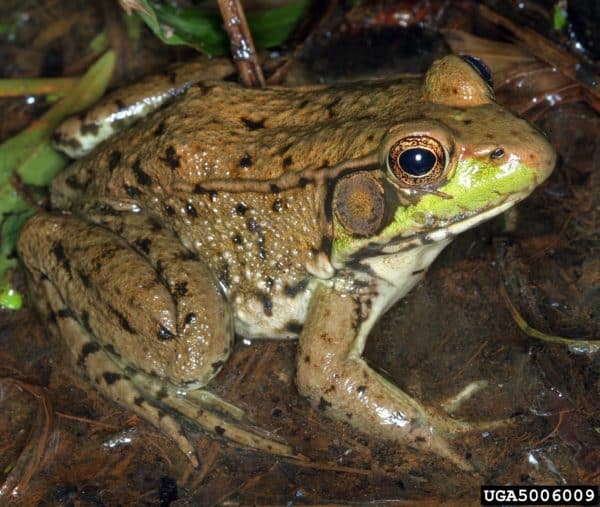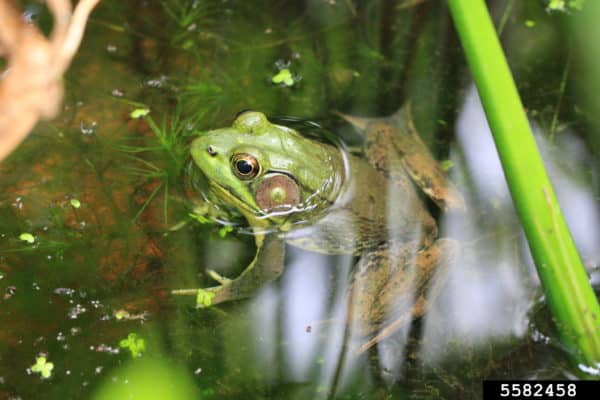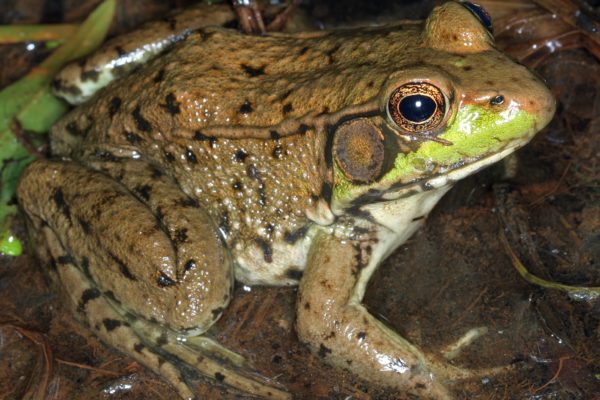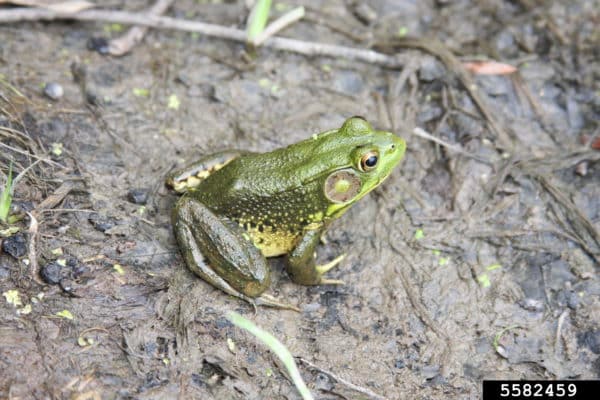Green frog
About This Species
Green frogs are native to Eastern North America. They inhabit ponds, the shallow ends of lakes and wetland areas. They feed on small fish, tadpoles and various aquatic invertebrates. They may outcompete native frogs for nesting habitat and food. Green frogs are known to displace Oregon spotted frog (Rana pretiosa), an endangered species in BC (COSEWIC 2011). Green frogs are designated as a Regional Containment/Control species by the BC Provincial Priority Invasive Species List.
How to Identify
Adult Green frogs are 5-10 cm long, not including their legs. Colouration varies from emerald green to olive green to brown, and they may or may not have dark splotches along their backs and legs. The bellies are lighter than the backs, typically yellow. They have large eardrums right behind their eyes.
Green frogs look similar to the American bullfrog (Lithobates catesbeianus). There is one easy way to tell them apart – Green frogs have a raised ridge of skin that starts behind their eyes and goes most of the way down their backs. American bullfrogs lack this ridge of skin.

Take Action
Prevention is the best approach.
-
If you need advice about invasive species on your property or you are concerned about reported invasives in your local area, contact your local government or regional invasive species organization.

Don't Let It Loose
Learn about best practices
Invasive species are plants, animals or other organisms that are not native to BC, and have serious impacts on our environment, economy and society. Never release your plants and animals into the wild or dump aquariums or water garden debris into rivers, streams, lakes or storm sewers!

Clean, Drain, Dry
Learn about best practices
The Clean Drain Dry program empowers you to help reduce the spread of invasive plants and organisms to BC waters by following the clean, drain, dry procedure on all watercraft and equipment.
REPORT TO PROTECT BC’S BIODIVERSITY

Use the app
Observe and report to protect BC’s biodiversity

Report through this website
Use our form to tell us what you’re seeing and where.





